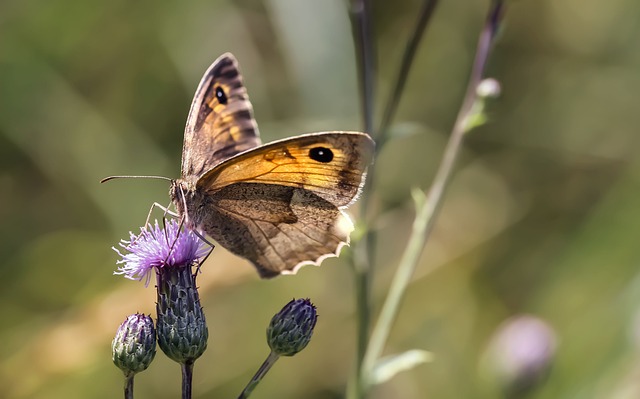Psocids, or book lice, are tiny insects that thrive in dark, moist environments and can infiltrate various materials. Professional psocid control services employ a strategic multi-step approach to removal, focusing on habitat elimination, disrupting the insect's life cycle, and minimizing chemical use through eco-friendly solutions. The first step is assessing infestation severity through thorough inspections, followed by customized control plans tailored for residential or commercial settings. These plans involve targeting all psocid life stages (eggs, nymphs, adults) and sealing entry points. Eco-friendly methods, such as heat treatments and targeted pesticide applications, are prioritized over traditional chemical solutions to ensure long-lasting, sustainable protection against these persistent pests. Regular inspections and proactive measures like gap sealing and ventilation improvements prevent reinfestation. This holistic approach not only removes current infestations but also acts as a barrier against future psocid issues, fostering healthier environments while preserving biodiversity.
Psocids, also known as book lice, can quickly transform a space from livable to uninhabitable with their relentless proliferation. These tiny pests thrive in dark, humid environments, making them a common nuisance in residential and commercial settings alike. This article guides you through effective strategies for long-term psocid prevention, including understanding these insects, assessing infestation levels, developing tailored control plans, and implementing eco-friendly solutions provided by professional psocid removal services. Discover how to reclaim your space from these persistent pests once and for all.
Understanding Psocids: Behavior and Habitat
Psocids, also known as book lice or bark lice, are tiny insects that belong to the Psocidae family. Despite their name, they have no relation to lice. These pests are common in both residential and commercial settings, infesting a wide range of materials such as paper products, textiles, wood, and even fake plants. Understanding their behavior is crucial for effective psocids control services. Psocids prefer dark, quiet places with ample moisture and food sources, making them well-adapted to living in cracks, crevices, and hidden areas. They feed on tiny particles of organic matter, including lint, dust, and even mold, making residential psocid treatment and commercial psocid extermination challenging.
Professional psocid removal often involves a multi-step approach due to their elusive nature. Eco-friendly psocid solutions are gaining popularity as people seek safer alternatives to traditional pesticides. These solutions focus on identifying and eliminating their habitats, disrupting their life cycle, and using minimal chemicals or natural repellents. Effective pest control for psocids requires a combination of methods tailored to each specific infestation, whether in homes or businesses. Psocid infestation removal should target not just the visible pests but also their eggs and nymphs to ensure comprehensive and lasting results. Customized plans for long-term prevention, including regular inspections and maintenance, are essential components of a robust psocid control strategy.
Assessing Infestation Severity and Identifying Entry Points
Assessing the severity of a psocid infestation is the first crucial step in developing an effective long-term prevention strategy. Professional pest control services often begin by conducting thorough inspections to identify the extent of the issue, as psocids can quickly multiply and spread throughout homes or commercial spaces. By evaluating the scale of the infestation, experts can tailor customized control plans, ensuring targeted and efficient psocid removal. This process involves meticulously searching for live insects, eggs, and webs in hard-to-reach areas like cracks, crevices, and behind walls.
Identifying entry points is another integral aspect of this assessment. Psocids often gain access to buildings through small openings, such as gaps around pipes, wires, or doors. Commercial psocid extermination specialists will use their expertise to pinpoint these points of entry, enabling them to implement eco-friendly solutions and seal off potential pathways. This dual approach—assessing the infestation’s reach and identifying weak spots—is key to developing robust, long-lasting control plans for both residential and commercial settings, ultimately providing effective psocid pest control.
Developing a Comprehensive Psocid Control Plan
Developing a comprehensive psocid control plan is paramount to effectively managing and preventing these persistent pests. Professional psocid removal services offer tailored solutions, especially for residential and commercial spaces, ensuring long-term protection. Expert pest control for psocids involves identifying entry points, implementing eco-friendly solutions, and utilizing advanced methods like heat treatments or targeted applications of pesticides to eliminate existing infestations.
Customized plans are designed to address specific needs, focusing on areas prone to psocid attraction and reproduction. Regular inspections and proactive measures, such as sealing gaps and improving ventilation, play a crucial role in preventing reinfestation. With the right approach, these strategies not only remove current psocid infestations but also act as barriers, making spaces less inviting for future psocid pest control issues.
Implementation and Maintenance of Eco-Friendly Solutions
Implementing and maintaining eco-friendly solutions for psocids control is a strategic approach that combines natural methods with professional expertise to ensure long-term prevention. Unlike traditional pest control for psocids, which often relies heavily on chemicals, residential and commercial psocid treatment options that are eco-friendly prioritize sustainable practices. Professional psocid removal services can assess the specific needs of a property, designing customized plans that integrate organic pesticides, structural adjustments, and behavioral modifications to disrupt psocid infestation removal cycles naturally.
Regular maintenance is key to sustaining these eco-friendly psocid solutions. This involves periodic inspections, timely applications of natural remedies, and continuous monitoring for any signs of reinfestation. By adhering to these measures, both residential and commercial properties can effectively manage psocid populations without compromising the health and safety of occupants or damaging the environment. Such proactive approaches not only contribute to a healthier living and working space but also play a significant role in preserving biodiversity and promoting a greener ecosystem.
Psocids can be persistent pests, but with a tailored, long-term prevention plan involving professional psocid removal and eco-friendly practices, both residential and commercial spaces can achieve effective psocid control. By assessing severity, identifying entry points, and implementing a comprehensive strategy that includes regular maintenance, property owners and managers can prevent future infestations. Consider hiring pest control for psocids who specialize in developing custom plans and providing efficient, safe solutions to ensure a psocid-free environment.
